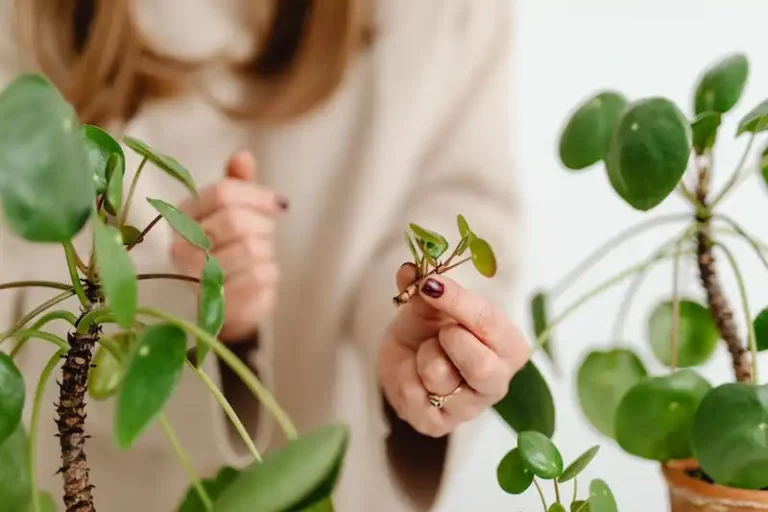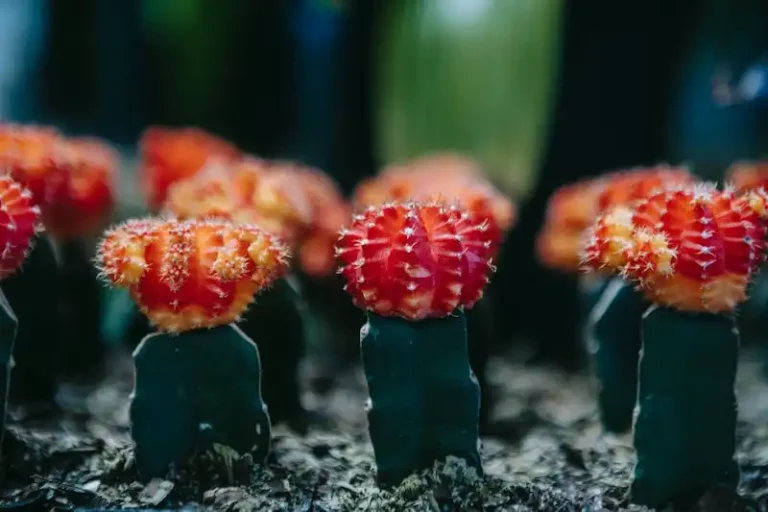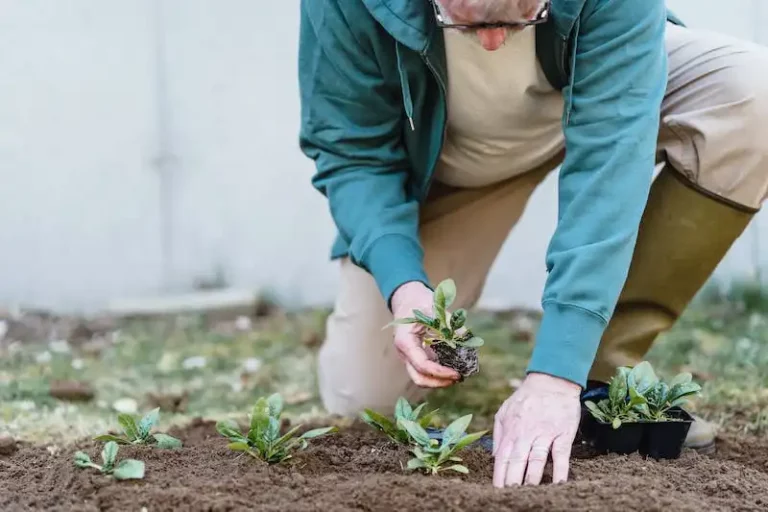The Garden of Eaden is a paradise for nature lovers and plant enthusiasts, offering a wide variety of flora and fauna. The garden boasts an impressive collection of plants from all over the world, including a special collection of Chinese flowers and a charming array of flowering vines that adorn trellises and windows.
One of the highlights of the Garden of Eaden is the stunning display of overwatering plants. These newly propagated creepers, which are well-established in the garden, provide a unique and eye-catching spectacle. If you’re a fan of climbing vines, then be sure to take a look at the Virginia creeper, which is particularly vigorous and requires little care.
If you’re interested in learning how to propagate and care for these creepers, there are a few tips you should consider. First, when removing a cutting from a well-established plant, be sure to make a clean diagonal cut just above the nodes. This helps the cutting to establish roots more easily when planted in soil.
When planting the cutting, it is important to use well-draining soil that doesn’t hold too much moisture. Ideally, a mix of virginian soil and perlite works well for this purpose. The newly planted cutting will also need a support structure, such as a trellis or a window frame, to climb up.
Once the cutting has been planted and the support structure is in place, make sure to water it regularly. However, be careful not to overwater, as this can lead to root rot and other issues. It is also important to provide the newly propagated creeper with enough sunlight, as they thrive in bright and sunny locations.
As the plant grows, you may need to prune it to keep it in shape and remove any dead or damaged parts. You can do this by removing the support structure and gently bending the creeper downwards. Then, using a clean blade, prune the plant to the desired shape. Be sure to remove any branches that are crossing or rubbing against each other.
In addition, the Garden of Eaden also offers a special guide on how to care for and transplant other types of plants, such as cyclamen and powdery virginia. These handy guides provide step-by-step instructions on the process of transplanting, removing the plant from its pot, and planting it in a new location. They also offer tips on how to provide the plants with the right amount of water and sunlight.
So, if you’re looking to create your own garden paradise or simply want to learn more about plant care and propagation, a visit to the Garden of Eaden is a must. You’ll be amazed by the variety of plants and the helpful guides that can help you become a green thumb in no time!
How to Grow Virginia Creeper
Virginia Creeper (Parthenocissus quinquefolia) is a type of climbing vine that can quickly cover walls, fences, and other structures. It is a fast-growing plant that can provide shade and aesthetic appeal to any space within the garden.
When planting Virginia Creeper, it is important to choose a well-drained soil that is rich in organic matter. The plant can tolerate a wide range of soil types, but it prefers a slightly acidic soil pH. Before planting, make sure to prepare the soil by removing any weeds and breaking up any clumps.
Virginia Creeper can be propagated through seeds, cuttings, or suckers. For the best results, it is recommended to take softwood cuttings in the spring or semi-ripe cuttings in the summer. Dip the cuttings in rooting hormone powder and plant them in a well-draining potting mix. Keep the cuttings moist and monitor their progress.
Once the cuttings have rooted and are well-established, they can be planted in the desired location. Virginia Creeper is a vigorous plant that requires a large amount of space to grow. Make sure to provide adequate support, such as a trellis or fence, for the plant to climb on.
Virginia Creeper is a hardy plant that can tolerate a wide range of temperatures. However, it prefers cool to moderate temperatures and may not do well in excessive heat. To protect the plant during winter, provide a layer of mulch around the base and cover it with burlap or a similar material.
In order to keep Virginia Creeper in control, it is important to regularly monitor and prune the plant. Remove any dead or damaged stems, as well as any suckers that may appear. Pruning can be done in late winter or early spring, before new growth begins.
Virginia Creeper can be a great addition to any garden, providing a beautiful backdrop for other plants and attracting wildlife. Its ability to cling to walls and other surfaces makes it an effective climber, and its fast growth rate means it can quickly cover large areas.
In conclusion, growing Virginia Creeper is a relatively easy and rewarding gardening project. By following the proper instructions, the plant can thrive and provide an attractive addition to any garden or outdoor space.
The Garden of Eaden
The Garden of Eaden is known for its rich soils and effective gardening methods, especially when it comes to growing purple varieties. If you are a garden enthusiast, you will be delighted to find a wide range of plants that are purple in color. The diagonal layout of the garden provides a special charm to the overall landscape.
When it comes to removing weeds, The Garden of Eaden has a special technique. We provide regular monitoring and guide you on how to grow and care for your plants. Pruning is essential to ensure healthy growth, and we offer instructions on how to do it correctly to achieve the best results.
The Garden of Eaden recommends using well-drained and balanced soils for optimal plant growth. In particular, the Virginia variety thrives in these conditions. Masonry trellises are regularly used to support plants, especially those with severe height requirements. By controlling the temperature and ensuring proper sunlight exposure, we help the plants bloom and produce vibrant colors.
If you have any questions about gardening, The Garden of Eaden is here to assist you. We offer guidance on how to care for different varieties and remove pests using organic methods. We also provide instructions on propagating plants through cuttings and ensuring the best conditions for their growth.
For the safety of our visitors, The Garden of Eaden is well-established in removing poisonous plants from the premises. We also ensure that rampant creepers are kept under control and do not cause any harm. By thinning their berries and removing old and dead stems, we maintain a healthy environment for all.
One of the most popular plants in The Garden of Eaden is the cyclamen. With its bright and colorful flowers, it brings joy to any garden. We recommend using sharp shears to cut the stems and leaving a small portion attached to the plant. This helps the cyclamen in regrowth and provides a stunning display.
At The Garden of Eaden, we believe that gardening is not just a hobby, but a way of life. We strive to provide the best care and instructions to ensure your plants thrive. Whether you are a beginner or an experienced grower, our methods and expertise will help you create a beautiful and flourishing garden.
Remember to take your time and enjoy the beauty of The Garden of Eaden. Sit back, relax, and let the plants and nature guide you through the wonders of horticulture.
By using this website, you acknowledge and accept the use of cookies. For more information on how we use cookies, please refer to our privacy policy.
Propagating Virginia Creeper: A Step-By-Step Guide
Gardening enthusiasts often look for easy and low-maintenance plants to fill their garden. Virginia Creeper (Parthenocissus quinquefolia) is one such type of plant that provides a long year-round appeal with its vigorous growth and beautiful foliage. It is a climbing vine that doesn’t require much attention and flowers in the fall.
If you want to propagate Virginia Creeper to grow more of this plant, you can follow this step-by-step guide:
- Choose a healthy stem: Look for a healthy stem on your established Virginia Creeper plant. Make sure it has several leaflets and is free from any diseases or pests.
- Prepare the stem for propagation: Using sharp and clean garden shears, prune the stem off the main plant. Ideally, it should be 6-8 inches long.
- Remove the lower leaflet: Carefully remove the lower leaflet from the stem, leaving only the upper leaflet intact.
- Provide the stem with rooting hormone: Dip the cut end of the stem into a rooting hormone to encourage root development.
- Plant the stem: Fill a small pot with well-draining soil and create a small hole with your finger. Place the stem into the hole and gently press the soil around it to secure it in place.
- Water regularly: Water the newly planted stem regularly, making sure to keep the soil moist, but not waterlogged.
- Monitor the growth: Within a few weeks, you should start to see new growth from the stem. At this point, you can gradually expose it to more sunlight.
- Prune and shape: Once the stem has grown into a well-established plant, you can prune it to maintain its shape and keep it from becoming too long or invasive.
- Monitor spread: Virginia Creeper can grow vigorously and spread through suckers, so regularly monitor its growth and remove any unwanted shoots.
- Provide support: If you plan to grow Virginia Creeper against a wall or fence, make sure to provide an appropriate support structure for it to climb on.
By following these step-by-step instructions, you can propagate Virginia Creeper and fill your garden with this beautiful and easy-to-grow plant. Just make sure to monitor its growth and prune it regularly to ensure its health and prevent it from becoming too invasive.
With the guidance provided in this article, you’re ready to start propagating Virginia Creeper and enjoy its benefits in your own garden. Happy gardening!



